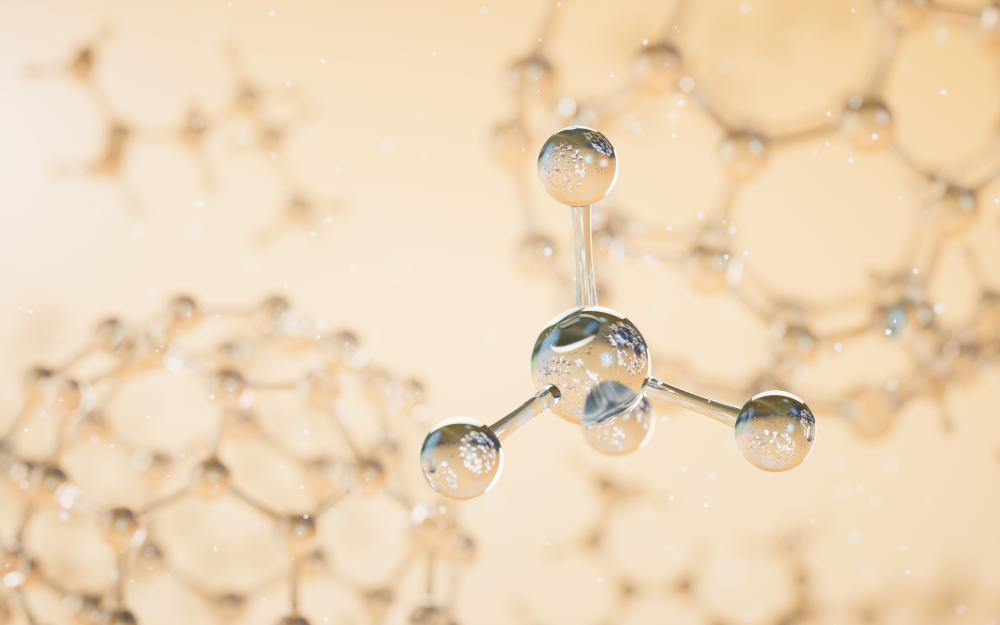




At Silver Fern Chemical, Inc, we understand that Dicarboxylic acid plays a pivotal role across numerous industries, embodying a cornerstone of organic chemistry that’s as versatile as it is vital. This organic compound, notable for its two carboxyl groups (-COOH), manifests a broad spectrum of applications, from the manufacture of nylon and polyesters to its indispensable role in the production of certain medications and food additives.
Industrial Applications
Dicarboxylic acid’s functionality extends beyond basic chemistry into the realms of our everyday lives. In our experience, adipic acid, a form of Dicarboxylic acid, serves as a precursor in nylon production, impacting textiles and fashion. Simultaneously, its derivatives, such as azelaic acid, have found their purpose in cosmetics, demonstrating the compound’s adaptability to both industrial and personal care applications.
Moreover, through strategic collaborations with leading chemical manufacturers, we’ve observed Dicarboxylic acid’s utility in the creation of plasticizers, adhesives, and resins. This adaptability not only underlines the acid’s industrial significance but also showcases our commitment to streamlining supply chains, ensuring these invaluable compounds are accessible for diverse manufacturing needs.
In alignment with global initiatives toward sustainability, we recognize the importance of environmentally sensitive materials. Dicarboxylic acid, particularly when sourced responsibly, can contribute to greener manufacturing processes. Our dedication to eco-conscious practices involves exploring biodegradable variants of Dicarboxylic acid that maintain industrial efficacy while minimizing environmental footprint.
Our efforts to provide sustainable and high-quality Dicarboxylic acid align with our overarching mission to empower clients. By offering materials that adhere to stringent environmental standards, we aid industries in contributing to a cleaner, more sustainable future.
One of the challenges in the chemical supply industry, particularly for a product as ubiquitous as Dicarboxylic acid, is ensuring a steady, reliable source amidst fluctuating market demands. Our agility and global reach have enabled us to mitigate these challenges, reinforcing the stability of supply chains across various sectors.
In our nearly two decades of operation, we’ve fine-tuned our approach to address the specific needs of our clients, ranging from small end-users to large Fortune 500 companies. This has involved developing customizable solutions that extend beyond mere supply, encompassing logistics and compliance assistance to guarantee that our Dicarboxylic acid meets industry-specific regulations.
Moreover, our strategic distribution centers across North America have been instrumental in overcoming logistical hurdles, ensuring timely and cost-effective delivery of Dicarboxylic acid to our clients. This logistical efficiency, combined with our in-depth market understanding, enables us to navigate the complexities of the chemical supply landscape seamlessly.
Lastly, the personal relationships we cultivate with each of our clients underscore our belief in the value of trust and collaboration. By deeply understanding the unique challenges and opportunities within each sector we serve, we can provide Dicarboxylic acid solutions that are not just effective but are tailored to drive each client’s success.

At Silver Fern Chemical, Inc, we recognize the importance of Dibasic Ester (DBE) in a multitude of applications across various industries we serve. A Dibasic Ester is an ester derived from a dicarboxylic acid, where the alcohol component may range from methanol to higher molecular weight monoalcohols. The versatility and efficacy of Dibasic Ester make it a staple in our product lineup, catering to the needs of clients in sectors from paints and coatings to agricultural formulations.
In our experience, the unique properties of Dibasic Ester, such as its non-flammability, biodegradability, and non-corrosive nature, combined with a mild, fruity odor, make it an environmentally friendly choice for our clients. Sourced from leading chemical producers, our Dibasic Ester offerings are part of our commitment to supplying sustainable and high-quality chemical solutions. Its applications are far-reaching, enhancing products in paint strippers, plasticizers, adhesives, and more, thereby underlining the compound’s versatility and indispensability.
Industrial Applications
Among the vast array of applications, Dibasic Ester finds its primary use in industrial settings. It serves as a key ingredient in paint strippers, owing to its effective solvency properties that do not compromise safety or environmental standards. Our clients in the paints and coatings industry value Dibasic Ester for its ability to enhance the performance of their products, providing durability and reliability where it matters most.
Furthermore, in the realm of agriculture, Dibasic Ester contributes significantly to formulations designed for soil stabilization and crop protection. This underscores its role in supporting sustainable agricultural practices, a core value that Silver Fern Chemical, Inc upholds in its operations and product selections.
Eco-Friendly and Safe
The safety profile of Dibasic Ester is a paramount concern for us and our clients. Its non-toxic nature makes it a preferred choice in applications close to or directly impacting the environment and human health. This aligns with our mission to promote safer, cleaner, and greener chemical solutions without compromising on efficiency.
Our dedication to environmental stewardship is mirrored in the popularity of Dibasic Ester among our clients seeking eco-conscious raw materials. By integrating Dibasic Ester into their products, they are able to offer end-users safer, biodegradable solutions, thereby contributing to a healthier planet.
In nearly two decades of serving diverse markets, we’ve witnessed first-hand the transformative impact of Dibasic Ester on our clients’ products and practices. From enhancing the performance of lubricants, adhesives, and coatings to contributing to more sustainable agricultural and industrial operations, Dibasic Ester stands as a testament to innovation in chemical applications.
Our clients often share stories of how switching to Dibasic Ester-based formulations has not only improved the environmental footprint of their offerings but also elevated their market position. These testimonials drive us at Silver Fern Chemical, Inc to continuously explore novel applications and sources for Dibasic Ester, ensuring our place as a leader in the supply of environmentally responsible chemical solutions.
By leveraging our global reach and deep industry knowledge, we aim to keep our clients at the forefront of their respective fields, equipped with the best that chemistry and innovation have to offer. The story of Dibasic Ester in our product lineup is one of success, partnership, and a shared vision for a greener future.
At Silver Fern Chemical, Inc, the pursuit of sustainability shapes our approach to chemical supply. Eco-friendly solvent options have become a focal point of our product offering, responding to the growing demand for greener, cleaner industrial processes. These solvents, characterized by their low toxicity, minimal environmental impact, and efficacy in industrial applications, are pivotal in the transition towards more responsible manufacturing and processing methodologies.
When we explore the realm of eco-friendly solvents, it’s not just about reducing emissions or waste; it’s also about championing safety and health standards in the workplace. Our experience has shown us that simple alcohols like methanol and ethanol, alongside certain alkanes, are not only more sustainable but often offer a cost-effective alternative to their more hazardous counterparts.
Incorporating personal insights, we’ve observed firsthand the transformative impact of integrating eco-friendly solvents into operational practices. From enhanced safety protocols to reduced environmental liability, the benefits extend beyond mere compliance to foster a culture of sustainability and innovation within industries we serve.
Choosing the appropriate eco-friendly solvent for a specific application involves a nuanced understanding of both the solvent’s properties and the process’s requirements. In our professional journey, we’ve encountered scenarios where a seemingly perfect solvent on paper fell short in practical applications. This underscores the importance of comprehensive testing and evaluation, ensuring that an eco-friendly solvent aligns with both performance expectations and sustainability goals.
Our collaborative approach with clients and partners enables us to navigate these challenges, leveraging our extensive experience and the collective expertise of our network. By considering factors such as solubility, volatility, and environmental impact, we tailor our recommendations to not only meet but exceed our clients’ specific needs.
Case Studies and Success Stories
One of the most rewarding aspects of our work is witnessing the positive outcomes from the adoption of eco-friendly solvents. Through detailed case studies, we’ve documented significant improvements in resource efficiency, waste reduction, and overall environmental footprint across various industries. These success stories serve not just as testimonials to the efficacy of eco-friendly solvents but also as a blueprint for others to follow.
In sharing these experiences, we aim to illuminate the pathway for more sustainable industrial practices, demonstrating that eco-friendly solvents are not only viable but often preferable alternatives to traditional solvents.
At Silver Fern Chemical, Inc, our commitment to sustainability extends beyond the provision of eco-friendly solvents. We engage in ongoing dialogue with industry leaders, regulatory bodies, and sustainability experts to stay at the forefront of environmental stewardship. This holistic approach allows us to anticipate shifts in regulatory landscapes and market demands, ensuring that our clients are well-equipped to navigate the complexities of modern industrial operations.
Our work in promoting eco-friendly solvents is complemented by our efforts to advance broader sustainability initiatives. From reducing energy consumption in our operations to fostering transparency in our supply chain, we are dedicated to making a positive impact on the planet and the communities we serve.
Ultimately, our journey with eco-friendly solvents is more than a business endeavor; it’s a reflection of our broader mission to contribute to a more sustainable and prosperous future. Through collaboration, innovation, and a relentless pursuit of excellence, we continue to champion eco-friendly solutions that benefit our clients, our communities, and our planet.

When we talk about dicarboxylic acids, we’re referring to a fascinating group of organic compounds that are versatile and ubiquitous in both nature and synthetic applications. Common examples include adipic acid, which is widely used in the production of nylon, and malonic acid, a key component in polyesters. Other notable examples are succinic acid, used in food and pharmaceuticals, and azelaic acid, which has found its place in cosmetics for its skin-clearing properties. Each of these acids features two carboxyl (-COOH) groups, which is where they get their distinctive name and reactive nature from. In our work at Silver Fern Chemical, we’ve seen firsthand how each of these acids plays a crucial role in various industries, showcasing their incredible diversity and utility.
The simplest form of dicarboxylic acid is oxalic acid. It consists of just two carbon atoms, making it the shortest chain dicarboxylic acid possible. Despite its simplicity, oxalic acid is remarkably versatile and plays a pivotal role in many natural processes, including plant metabolism. It’s also used in various industrial applications, such as cleaning and metal processing. Its simplicity underscores the fundamental nature of dicarboxylic acids in chemistry and industry alike, serving as a building block for more complex molecules and processes.
Dicarboxylic acids belong to a group of organic compounds characterized by having two carboxyl (-COOH) groups attached to their molecular structure. This dual functional group arrangement imparts dicarboxylic acids with distinctive chemical properties, such as enhanced solubility in water and a higher reactivity compared to their monocarboxylic acid counterparts. This structural feature makes dicarboxylic acids indispensable in creating polymers, resins, and many other materials that play critical roles across a wide range of industries. Their utility spans from simple plasticizers to complex pharmaceuticals, underlining the importance of understanding these compounds’ unique chemical nature.
When it comes to skin care, not all acids are created equal. Dicarboxylic acids, such as azelaic acid, have been widely studied and proven to offer beneficial properties for skin health. Azelaic acid, in particular, is celebrated for its antibacterial, anti-inflammatory, and depigmenting effects. It’s commonly used in dermatology to treat a variety of skin conditions, including acne, rosacea, and hyperpigmentation. However, as with all active substances, the key to safety lies in appropriate concentrations and formulations. Products containing dicarboxylic acids are carefully formulated to ensure that they provide their benefits without causing harm, reflecting the importance of science and precision in skincare. As always, we encourage our clients to consult with healthcare professionals to determine the best skincare regimen for their specific needs.